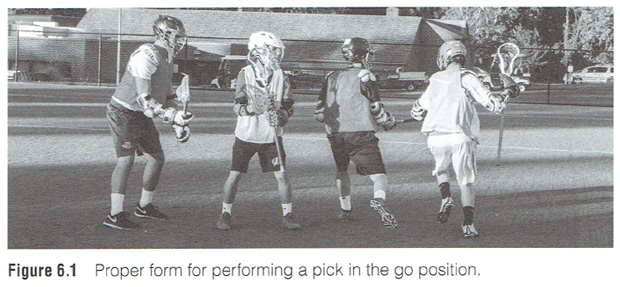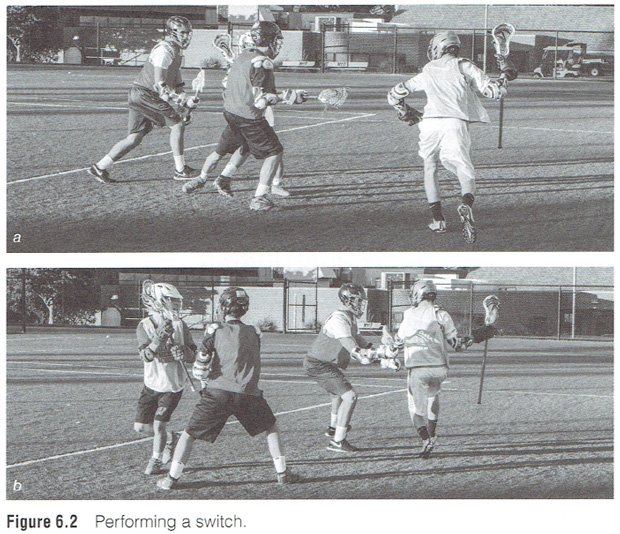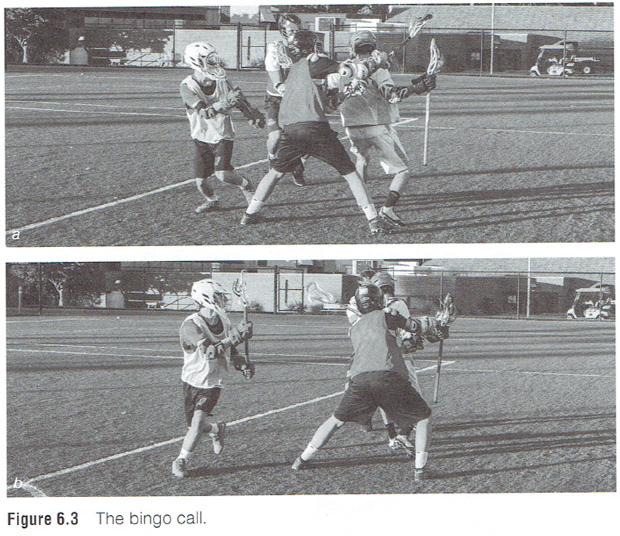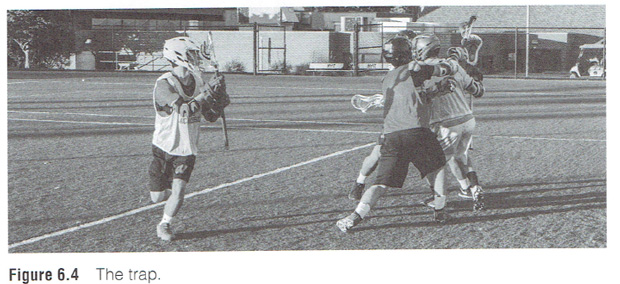| Defensive Body Positioning |
| By: Jack Kaley and Rich Donovan
Originally Published in: Lacrosse Essentials - Provided by: Human Kinetics
Footwork and body positioning are the keys to good defense. Your body should be low, with your head up, back straight, knees bent, and weight on the balls of your feet. Feet should be shoulder-width apart and parallel. Always position yourself between the man you are guarding and the goal. How close you are to your man depends on his position on the field and the location of the ball. If he's playing inside, on or near the crease, you must be close enough to check his stick before the ball gets to him. If he is playing on the perimeter, you should be close enough to get to him as he receives the ball. When he has the ball, overplay slightly to stick side and be prepared to run hip to hip with him. When he is running with the ball, be prepared to receive directions from your off-ball defenders who will make calls such as pick, switch, go, or bingo. A pick is when an opposing offensive player tries to set up a screen off the ball, hoping to prevent you from keeping up with the player you are guarding. The pick call is followed by one of the other three commands. Go means there is room for you to slide above the pick and stay with your man (see figure 6.1). Switch means it appears that you are going to run into the man setting up the pick so an exchange will be made (see figure 6.2).
Your teammate will pick up the man you are guarding, and you will pick up the man who picked you off the ball carrier. The bingo call is special. It-means that both you and your teammate will double the ball (see figure 6.3). In a trap, your teammate will double the ball from the onside, the direction he was going, and you will double the ball from the backside (see figure 6.4). If you are guarding a man behind the goal line extended (GLE), be prepared to turn him back as he approaches the GLE. Use your entire body; lead by your top-side leg to turn the player back. Do not rely on your arms and stick.
|











